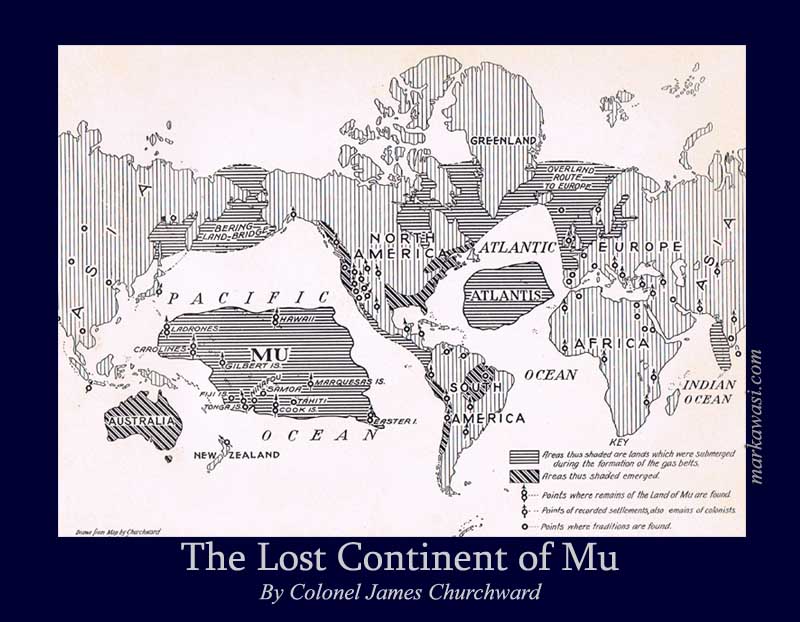Brien Foerster
Feagans, Carl
 Carl Feagans is an American archaeologist and a dedicated sceptic who has occasionally featured in these pages. His most recent offering is a critique of Marco Vigato‘s Empires of Atlantis [1830], which ended his harsh assessment with “Vigato began his book with a conclusion. He tried to support that conclusion with pseudoscientific and fictional accounts he apparently gathered for 15 years.”(a)
Carl Feagans is an American archaeologist and a dedicated sceptic who has occasionally featured in these pages. His most recent offering is a critique of Marco Vigato‘s Empires of Atlantis [1830], which ended his harsh assessment with “Vigato began his book with a conclusion. He tried to support that conclusion with pseudoscientific and fictional accounts he apparently gathered for 15 years.”(a)
>He has also offered a lengthy attack on Michael Jaye‘s Global Flood theory.(b)<
See: Brien Foerster, Fuente Magna Bowl, Spain, Sumerians & Yonaguni
(a) Book Review: Empires of Atlantis – Archaeology Review (ahotcupofjoe.net)
(b) https://ahotcupofjoe.net/2019/11/the-pseudoarchaeology-of-michael-jayes-worldwide-flood/ *
Pumapunku *
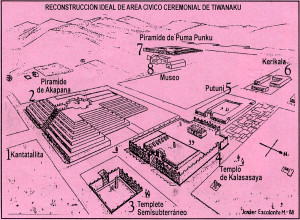 Pumapunku is a terraced earthen mound, faced with blocks and an important part of the Tiwanaku archaeological site on the Bolivian Altiplano. It has unique architectural features including the use of building blocks with up to 80 faces on them. The Tiwanaku site is pre-Inca and has given its earliest radiocarbon date as 536-600 AD and was in use until circa 1000 AD(a), which is a far cry from the flawed 12,000-15,000 BC date claimed by Posnansky(e)(f). Details of how these late dates were arrived at are available in a paper by Jason Yaeger and Alexei Vranich on the Academia.edu website(j).
Pumapunku is a terraced earthen mound, faced with blocks and an important part of the Tiwanaku archaeological site on the Bolivian Altiplano. It has unique architectural features including the use of building blocks with up to 80 faces on them. The Tiwanaku site is pre-Inca and has given its earliest radiocarbon date as 536-600 AD and was in use until circa 1000 AD(a), which is a far cry from the flawed 12,000-15,000 BC date claimed by Posnansky(e)(f). Details of how these late dates were arrived at are available in a paper by Jason Yaeger and Alexei Vranich on the Academia.edu website(j).
As with so many other enigmatic ancient sites, various members of the ‘lunatic fringe’ have attributed the construction at this location to either ancient astronauts or Atlanteans or an exotic combination of both, based on either over-fertilised imaginations or flawed data or again, both. Jason Colavito has written a critique of some of the more silly suggestions(b). In September 2024, Ancient Aliens revisited Puma Punku (S20.E20), recycling silly claims about extraterrestrial visitors. Once again, Colavito was obliged to put fingers to keyboard to review this latest episode(l).
Ancient astronaut advocate Von Däniken[1147.221] and Brien Foerster(d) among others have claimed that the stones of Pumapunku were composed of diorite, an exceptionally hard stone, which would have required a modern diamond-tipped drill to work it. The implication is that only Atlanteans with their advanced technology or extraterrestrials could have worked the stone with such precision.
Brien Foerster also published a paper on the Academia.edu website in Feb. 2023 in which he decries “The extraction, wanton destruction, and recycling of much of the Puma Punku site that can be easily seen in the small nearby town also called Tiwanaku, where many of the buildings, including the church, contain the telltale grey andesite blocks, with smooth flat surfaces, which clearly came from Puma Punku.” He also points out that while Tiwanaku has been declared a World Heritage Site by UNESCO, Puma Punku has received little attention(k).”
However, Colavito and Michael Heiser(c) have pointed out that this identification is untrue and that they were composed of the softer andesite and red sandstone. Apart from this, the Code of Hammurabi was incised on diorite, without Atlantean or extraterrestrial assistance, 2,000 years before the development of Pumapunku!
Joseph Davidovits who controversially proposed that Giza’s Great Pyramid stones had been cast rather than carved has also claimed that other well-known structures had been created in a similar manner, such as at Tiwanaku and Puma Punku in Peru(g) and Easter Island(h).
Javier Escalante Moscoso is an architect with a degree in archaeology who has extensively excavated and surveyed the Tiwanaku monuments. (see map above).
A fully illustrated guide to the monuments of Tiwanaku/Puma Punku is an excellent introduction to the site including a map by Moscoso(i).
(a) https://skeptoid.com/episodes/4202
(b) https://www.jasoncolavito.com/blog/review-of-in-search-of-aliens-s01e07-the-mystery-of-puma-punku
(c) See: https://atlantipedia.ie/samples/archive-2803/
(d) https://hiddenincatours.com/posts/videos/#!/keyword_filter=Puma%20Punku (now password protected) *
(e) The age of Tiwanaku (Tiahuanaco) Site, Bolivia (archive.org)
(f) https://www.mail-archive.com/ctrl@listserv.aol.com/msg62910.html
(g) https://www.geopolymer.org/archaeology/tiahuanaco-monuments-tiwanaku-pumapunku-bolivia/
(h) https://www.geopolymer.org/library/video/they-came-from-america-to-build-easter-island/
(i) Tiwanaku, the mysterious pre-Inca capital – mapaymochila.es
(k) (99+) The Enduring Enigma Of Puma Punku in Bolivia | Brien Foerster – Academia.edu
(l) https://www.jasoncolavito.com/blog/review-of-ancient-aliens-s20e20-resurrecting-puma-punku
Foerster, Brien *
Brien Foerster is an American writer who now lives in Cuzco, the former Inca capital in Peru. He has studied the 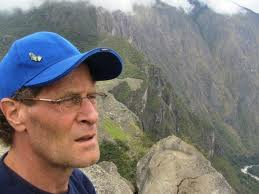 ancient cultures of the Andes and believes that many predated the Incas and had advanced technologies that permitted the precise drilling of stone(a). His fully illustrated Kindle book, Lost Ancient Technology of Peru and Bolivia[0923], provides many examples. The book is worth purchasing for the images alone. There is now a video(d) that complements Foerster’s book.
ancient cultures of the Andes and believes that many predated the Incas and had advanced technologies that permitted the precise drilling of stone(a). His fully illustrated Kindle book, Lost Ancient Technology of Peru and Bolivia[0923], provides many examples. The book is worth purchasing for the images alone. There is now a video(d) that complements Foerster’s book.
Foerster has now studied the stonework of the ancient Egyptians and like Chris Dunn concluded that their level of accuracy could not have been achieved without possession of a high technology, now lost(i). He has expanded on this in his 2014 book, Lost Ancient Technology of Egypt[1487].
However, Foerester has recently stepped out of line when he apparently chipped fragments from stones at the Bolivian Puma Punku site with a view to having them tested for age. The laboratory refused to test the fragments as Foerester did not have the appropriate export document from Bolivia(e). It would appear that Foerster is either stupid or criminally irresponsible or both. Apparently, Foerester now claims that the details of this report are inaccurate and may be libellous(f).
This episode is reminiscent of the two German scientists who in 2013 were wrongfully accused of removing part of the ‘Vyse cartouche’ in the Great Pyramid and illegally smuggling it out of Egypt. This was subsequently shown to be a false claim by Zahi Hawass(l).
Elsewhere with regard to Atlantis, he claims “the most plausible idea is that Atlantis was not a single land mass that sank, but was a series of smaller states in the Atlantic area 12,000 years ago.”
In recent interviews, Foerster has proposed that the story of Atlantis is based on an Ice Age civilisation(g). His latest attention-seeking claim is that the Maya visited ancient Egypt, a trip that had some form of Atlantis connection(h).
He has also co-authored with David Hatcher Childress a book on South American cranial deformation and elongated skulls. These are reminiscent of similar skulls found in Malta(c) and Egypt as well as elsewhere around the world and date back many thousands of years(b).
Carl Feagans’ website(j) has a number of articles that are highly critical of Foerster’s methods and motivation. Equally critical is a posting and comments on the newagefraud.org website(k).
(a) https://www.youtube.com/watch?v=xR7of1Lkef0
(b) https://www.atlasobscura.com/articles/head-space-artificial-cranial-deformation
(c) https://nexusilluminati.blogspot.ie/2013/03/ancient-elongated-skulls-and-cranial.html
(d) https://www.youtube.com/watch?v=HmK7Ng0eGV8
(h) https://verumetinventa.wordpress.com/2016/06/28/brien-foerster-good-evidence-of-maya-culture-in-egyptian-pyramids/ (offline October 2017)
(k) http://www.newagefraud.org/smf/index.php?topic=5345.0 *
(l) URGENT URGENT! BREAKING NEWS: EGYPT – Atlantisforschung.de (atlantisforschung-de.translate.goog)
Abydos *
Abydos, known locally as Umm el-Qa’ab, is a site in Upper Egypt that contains a variety of structures including the Osirion, which is alleged to be the burial-place of Osiris, the Egyptian deity who was the father of Horus and the brother and husband of Isis. It was discovered in 1901/2 by Sir William Flinders Petrie (1853-1942) and Margaret Alice Murray (1863-1963)(c).
An illustrated tour of the Abydos Temple of Seti I and the Osirion is offered by Jimmy Dunn, writing as Peter Rome(t).
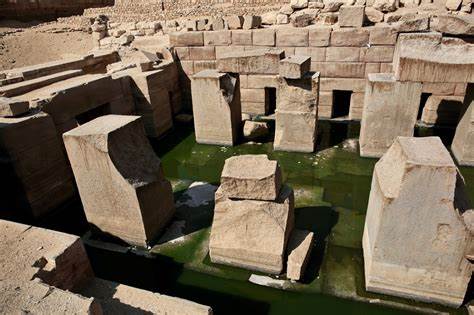 The Osirion (Osireion) has several unusual features that have led some, such as John Anthony West(a) to reasonably conclude that it is from a much earlier or at least a different period than the adjacent Temple of Seti I.
The Osirion (Osireion) has several unusual features that have led some, such as John Anthony West(a) to reasonably conclude that it is from a much earlier or at least a different period than the adjacent Temple of Seti I.
This view is based on at least three observations.
 (i) The foundations of the Osirion are much lower than those of the Temple of Seti, a feature that would have been unprecedented. It is more likely that the structure was originally designed to be built at ground level in a conventional manner. However, after construction, the ground level rose over succeeding years with the deposits of silt from the annual inundation by the Nile. Consequently, when the adjacent Temple of Seti was built, a considerable number of years later, it was erected on the much higher ground beside a buried Osirion.
(i) The foundations of the Osirion are much lower than those of the Temple of Seti, a feature that would have been unprecedented. It is more likely that the structure was originally designed to be built at ground level in a conventional manner. However, after construction, the ground level rose over succeeding years with the deposits of silt from the annual inundation by the Nile. Consequently, when the adjacent Temple of Seti was built, a considerable number of years later, it was erected on the much higher ground beside a buried Osirion.
(ii) The Temple of Seti has an unusual unique outline being ‘L’ shaped instead of having the usual rectangular form. This would seem to suggest that during the construction of the temple, the builders discovered the buried Osirion and had to alter the original design.
(iii) For some, the most compelling reason for dating the Osirion differently to Seti’s Temple is that stylistically the structure is totally at variance with anything else from Seti’s era.
In response to the last point, conventional archaeologists have proposed that “the Osireion was purposely archaized by New Kingdom architects to make it appear to be ancient. Such a design would be appropriate for the tomb of an ancient god. Any resemblance to Khafre’s Valley Temple, then, would be purely intentional.”
A 2006 article pointed out that “the Osirion is the only temple known from Ancient Egypt to be built below ground level!(o)
In 1995, Graham Hancock drew attention[275] to this difference in style and a 2019 article, Freddy Silva also commented on this incongruity(h)(k), but notes that while the Osirion at first sight, does not appear to have any obvious astronomical alignment, “only in the epoch of 10,000 BC do connections begin to emerge, for the constellation Cygnus appears in full upright ascent over the horizon in conjunction with the axis of the temple, the entrance framing its brightest star, Deneb.”
Silva added that the Osirion “represents a complete departure from standard temple design. However, a geological appraisal contradicts this opinion. In ancient times the level of the Nile was fifty feet lower than today, its course seven miles closer to and beside the Osirion. When North Africa was subjected to major flooding between 10,500-8000 BC, layers of Nile silt gradually compacted and rose inch by inch until they surrounded and covered the Osirion. In other words, the temple was originally a freestanding feature on the floodplain.”
On cue(i), Jason Colavito attacked Silva, pointing out a bad mistake where Silva incorrectly quoted Diodorus Siculus, subtly implying that everything else that he wrote was also erroneous.
As noted above, it is argued(d). that the apparently archaic architecture of the Osirion is just an example of how “the Egyptians had a recurring tendency to build in a ‘pseudo-archaic’ style”, noting that the style of the temple of Khafre in Giza resembles the Osirion. If so, which was copying which? While Khafre’s temple is adorned with hieroglyphics the apparent absence of any contemporary hieroglyphics in the Osirion seems to suggest a preliterate period for its construction!
The Valley Temple and the Sphinx Temple at Giza show similar construction techniques and are also devoid of inscriptions. As I see it, there is no unequivocal evidence on offer to demonstrate that the Osirion could not be much earlier than the nearby Seti Temple. Therefore, I would urge caution before hastily dismissing Hancock, Silva and others regarding this matter.
The conventional view that Seti I was responsible for the building of both the Temple and the Osireion is expressed in a well-illustrated paper by Keith Hamilton on the Academia.edu website(j).
This suggestion of an earlier date, such as in Ralph Ellis’ Thoth, the Architect of the Universe [0517], has added weight to the more general claim that other Egyptian monuments such as the Sphinx and some of the lower courses of the Great Pyramid are also from a predynastic era. This is interpreted by some as evidence of an early civilisation that might be more in keeping with the 9600 BC date in the story of Atlantis told to Solon by the Egyptian priests at Sais. Brien Foerester has also advocated an early date for the Osirion(n).
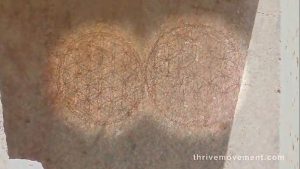 Another feature that appears to be unique to the Osirion is drawings of the ‘Flower of Life’ (FoL) on one of its pillars! Gary Fletcher touched on this in a 2009 paper(s). However, it is impossible to say when they were placed there. David Furlong has posted an article on the (FoL), noting particularly that some Greek letters have been identified inscribed beside the FoL design. This may suggest that the badly worn lettering was added long ofter the construction of the Osirion(u). Also on Furlong’s site we have an article by Malcolm Stewart describing the circle clusters and Greek writing as graffiti, possibly dating to the 3rd or 2nd centuries BC(v)!
Another feature that appears to be unique to the Osirion is drawings of the ‘Flower of Life’ (FoL) on one of its pillars! Gary Fletcher touched on this in a 2009 paper(s). However, it is impossible to say when they were placed there. David Furlong has posted an article on the (FoL), noting particularly that some Greek letters have been identified inscribed beside the FoL design. This may suggest that the badly worn lettering was added long ofter the construction of the Osirion(u). Also on Furlong’s site we have an article by Malcolm Stewart describing the circle clusters and Greek writing as graffiti, possibly dating to the 3rd or 2nd centuries BC(v)!
A sceptic’s view of the claimed early date for the Osirion can be read online(d).
It is worth noting that Abydos was also the site of a remarkable discovery of 14 buried boats that have been dated to at least 3000BC and again possibly even pre-dynastic.
Klaus H. Aschenbrenner has produced an Internet article, Giza and Abydos: The Keys to Atlantis, unfortunately in German only, which bravely promotes the idea of an 11th millennium BC date for parts of both Giza and Abydos.
Hieroglyphics in the Temple of Seti at Abydos have also been seized upon by proponents of ancient technology existing in prehistoric times and possible links to a hi-tech Atlantis. These carvings suggest the outline of a helicopter and a submarine! A refutation of this interpretation, by Margaret Morris(b) and others(e)(f), has demonstrated that the carvings have been reworked and that some of the plaster infills had deteriorated. This helicopter claim has been successfully debunked on a number of sites(q), including a December 2022 posting on The Archaeologist website(r), which is particularly graphic. Furthermore, there is clear evidence that images of the hieroglyphics circulating on the internet were digitally ‘tidied up’.
Wayne James Howson offers some radical ideas concerning the Osireion in a 400-page book available on the Academia.edu website(l). Howson was influenced by the work of Jim Westerman(m).
In November 2016, it was announced that a city was unearthed not far from the Abydos temples, where “it is believed the city was home to important officials and tomb builders and would have flourished during early-era ancient Egyptian times.(g)“
(a) http://www.jawest.net/hall_of_maat.htm
(b) See Archive 2727
(c) https://ascendingpassage.com/Osirion-at-Abydos.htm
(d) https://rationalwiki.org/wiki/Osireion,
(e) https://rationalwiki.org/wiki/Abydos_helicopter
(f) http://www.catchpenny.org/abydos.html
(g) https://www.bbc.com/news/world-middle-east-38084391
(h) https://grahamhancock.com/silvaf4/
(j) https://www.academia.edu/37568156/The_Osireion_A_Laymans_Guide
(k) https://www.ancient-origins.net/history/osirion-abydos-0012397
(m) https://jameswesterman.org/?p=home
(n) Ancient Egypt: The Osirion And The “Mystery ” of the “Flower Of Life” Symbols – Hidden Inca Tours
(o) http://egyptiansecrets.blogspot.com/2006/02/mysterious-osirion-at-abydos.html
(p) Who built the Osireion? (catchpenny.org)
(q) http://www.fineart.be/UfocomHQ/usabydos.htm (link broken)
(r) https://www.thearchaeologist.org/blog/the-abydos-helicopter-hieroglyphics
(t) http://www.touregypt.net/featurestories/setiabydos.htm
(u) The Osirion and the Flower of Life (davidfurlong.co.uk)
(v) The Flower of Life – Malcolm Stewart Article (davidfurlong.co.uk)
Incas
The Incas or at least their ancestors are claimed by Jim Allen to have ruled Atlantis, which he insists exited on the Altiplano of the Andes in Bolivia. However, the idea of a connection between Atlantis and the cultures of Central and South America is not new, having been first mooted by Pedro Samiento de Gamboa in 16th century. Supporters of the theory today cite the extremely controversial Oera Linda Book which states that one of the Frisian naval commanders named Inka reached America after the destruction of Atlantis. With this tenuous etymological link they conclude that he was the founder of the Inca civilisation, ignoring the fact that the earliest evidence for the Inca tribe dates to around 1200AD while the Oera Linda Book puts the destruction of Atlantis circa 2200BC, leaving an unexplained gap of nearly 3500 years. A Frisian–Inca connection is also proposed on the Stepping Stones website(a) which for good measure endeavours to link them with the Shang Chinese, the Magyars and, of course, the Atlanteans(b).
The great tragedy of the Inca culture is that they left no written records with the exception of the knotted strings known as quipu (khipu)(d). Gary Urton is a Professor of pre-Columbian Studies and has a website dedicated to the study of quipu(e). In April 2017, Sabine Hyland published a paper on some late 18th century khipus made of animal hair, which according to local Peruvian villagers contained an account of an uprising against the Spaniards(g)(i).
But now, Urton and Alejandro Chu, of the Universidad Nacional Mayor de San Marcos in Lima have studied a collection of khipus at the Inkawasi site have concluded that the khipus in question probably recorded taxes levied on local crops(j).
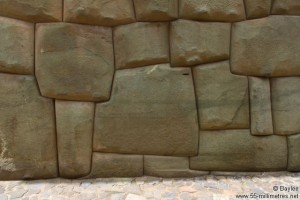 Leaving aside any consideration of an Atlantean link with the Inca people, there is no doubt that that the Incas possessed remarkable construction capabilities. It has been estimated that they constructed nearly 25,000 miles of roadway in a period of around 100 years(f)! This network, known as Qhapaq Ñan, extends over six countries and is now a Unesco World Heritage Site, the largest on the planet. Unfortunately it has been allowed to deteriorate. Efforts are being made to redress this unfortunate situation(h).
Leaving aside any consideration of an Atlantean link with the Inca people, there is no doubt that that the Incas possessed remarkable construction capabilities. It has been estimated that they constructed nearly 25,000 miles of roadway in a period of around 100 years(f)! This network, known as Qhapaq Ñan, extends over six countries and is now a Unesco World Heritage Site, the largest on the planet. Unfortunately it has been allowed to deteriorate. Efforts are being made to redress this unfortunate situation(h).
The megalithic masonry to be found in Cusco, their ancient capital, further highlights their outstanding construction abilities. A recent well-illustrated book by Brien Foerster, Lost Ancient Technology of Peru and Bolivia[923] examines a range of Incan sites and their often enigmatic monuments. This is a valuable addition to the literature on the subject.
In 2007 the Peruvian engineer and writer, Jesus Americo Huari Roman (1950-), wrote a book (for private circulation) entitled La Atlantida y el Imperio de los Incas (Atlantis and the Empire of the Incas), in which he also argues that then Incas were descendants of the Atlanteans. He has video clips on YouTube supporting his theory(a), unfortunately, with Spanish dialogue only.
(a) https://www.youtube.com/user/JESUSAMERICO100/feed
(b) https://all-ez.com/epigraphy.htm
(c) https://all-ez.com/frisian-inka.htm
>(d) http://enperublog.com/2009/06/30/unlocking-the-secrets-of-the-quipus/
(e) Researchers (archive.org)<
(g) https://www.sciencenews.org/article/twisted-textile-cords-may-contain-clues-inca-messages?tgt=nr
(h) https://www.bbc.com/travel/gallery/20170912-a-30000km-road-network-from-the-andes-to-the-amazon
(i) https://www.scientificamerican.com/article/unraveling-an-ancient-code-written-in-strings/
(j) https://www.sciencenews.org/article/khipus-knotted-cords-incas-taxes
Mu *
Mu was first used (invented?) by Brasseur de Bourbourg in 1869 as the name given to a mythical continent that supposedly existed in the Pacific Ocean, according to an incorrect translation of the Codex Troano. At the end of the 19th century, this fictional continent was confusingly moved by Augustus le Plongeon into the Atlantic! Subsequently, le Plongeon’s friend ‘Colonel’ James Churchward moved Mu back to the Pacific in a 1931 book, The Lost Continent of Mu[233], in which he presented it as a kind of Pacific precursor to Atlantis. Churchward claimed that his work is based on inscriptions on the so-called Naacal tablets, which he was allegedly taught to translate by an Indian priest. Churchward is reputed to have devoted 50 years of his life searching for Mu. In 2011 a hoax claim that the Naacal tablets had been rediscovered did nothing but detract further from Churchward’s already dubious reputation(d).
A paper by Megan Wright on the fakearchaeology website offers further debunking of the probably imaginary Naacal Tablets(g).
Churchward was born in England but lived mainly in America. He wrote a book on fly-fishing in Maine and even more incongruously was granted a series of railroad-related U.S. patents. Although he liked to be addressed as Colonel no record of his military service has been found. He never identified the monastery where his priestly mentor lived nor has any monastery ever claimed to possess such tablets. Churchward never produced any evidence whatsoever that the tablets existed. His books cannot be treated as credible as they offer nothing but the outpourings of an over-fertile imagination. At the time of his death, in California, he had a number of additional books in preparation.
Churchward’s grandson, Jack E. Churchward, now has a website(a) devoted to his writings. It is not generally known that the father of modern Turkey, Kemal Ataturk, had Churchward’s book studied in the hope of confirming links between the Turkish people and ancient civilisations such as the Uighur (recently in the news), Maya and Aztec!
In 1969 the French hydrologist Louis-Claude Vincent (1906-1988) published two volumes on the origins of civilisation which he placed in Mu. This was probably the last major work based on the very questionable output of Churchward.
Later psychics embellished the already colourful writing of Churchward and pushed the story from fiction to farce.
Strictly speaking, Mu should not be confused with Lemuria, as the former is just an invention of Le Plongeon while the latter word was originally used as a geological term to describe a hypothetical submerged landmass in the Indian Ocean. Nevertheless, the two terms are now frequently used interchangeably. In an article in New Dawn Magazine, Brian Haughton notes the speculations of some who think that Australia was once part of a sunken Pacific continent(h). Furthermore, a third name, Pan, has also been used to describe a vast sunken continent in the Pacific.
Brien Foerster, the Canadian-reared writer, claims that the Hawaiian Islands are the remains of Mu(b), whereas Churchward considered them to be just a tiny part of his imaginary landmass.
Jason Colavito, following some hate mail from an over-excited Mu ‘believer’, has written an interesting article(c) on the history of Churchward’s lost continent.
Frank Joseph in his most recent offering[1535] has some really nonsensical ideas to offer regarding mythical Mu. He claims that 40,000 years ago “sudden sea-level rises triggered migration from Mu around. The Pacific motherlanders settle on a large, fertile island about 380 kilometers due west of the Straits of Gibraltar. There, the newcomers merge with the native Cro-Magnon inhabitants, resulting in a new, hybrid culture – Atlantis.” He offers no evidence to support any of this and fails to explain how his Mu was inundated, but the new Atlantic home was not.
He then jumps forward to 9600 BC and has Mu flooded once again, followed by another wave of migration to Atlantis. Unsurprisingly, it offers no evidence and no explanation why these migrants would bypass the more accessible continents of Asia, Africa and America and head for an island in the Atlantic, which would have been affected by the same sea-level rise that inundated Mu!
In July 2023, David Hatcher Childress published a lengthy review of the story of Mu on the Ancient Origins website(e). I suppose in keeping with the spirit of our time, recycling is to be encouraged.
Also have a look at an earlier article entitled The Lost Continent that Never Existed: Mu, was published(f).
(b) https://www.grahamhancock.com/phorum/read.php?f=1&i=296625&t=296429
(c) https://www.jasoncolavito.com/blog/today-in-hate-mail-muvians-of-the-world-unite
(d) See: Archive 3033
(f) https://www.todayifoundout.com/index.php/2016/07/history-lost-continent-never-existed-mu/


